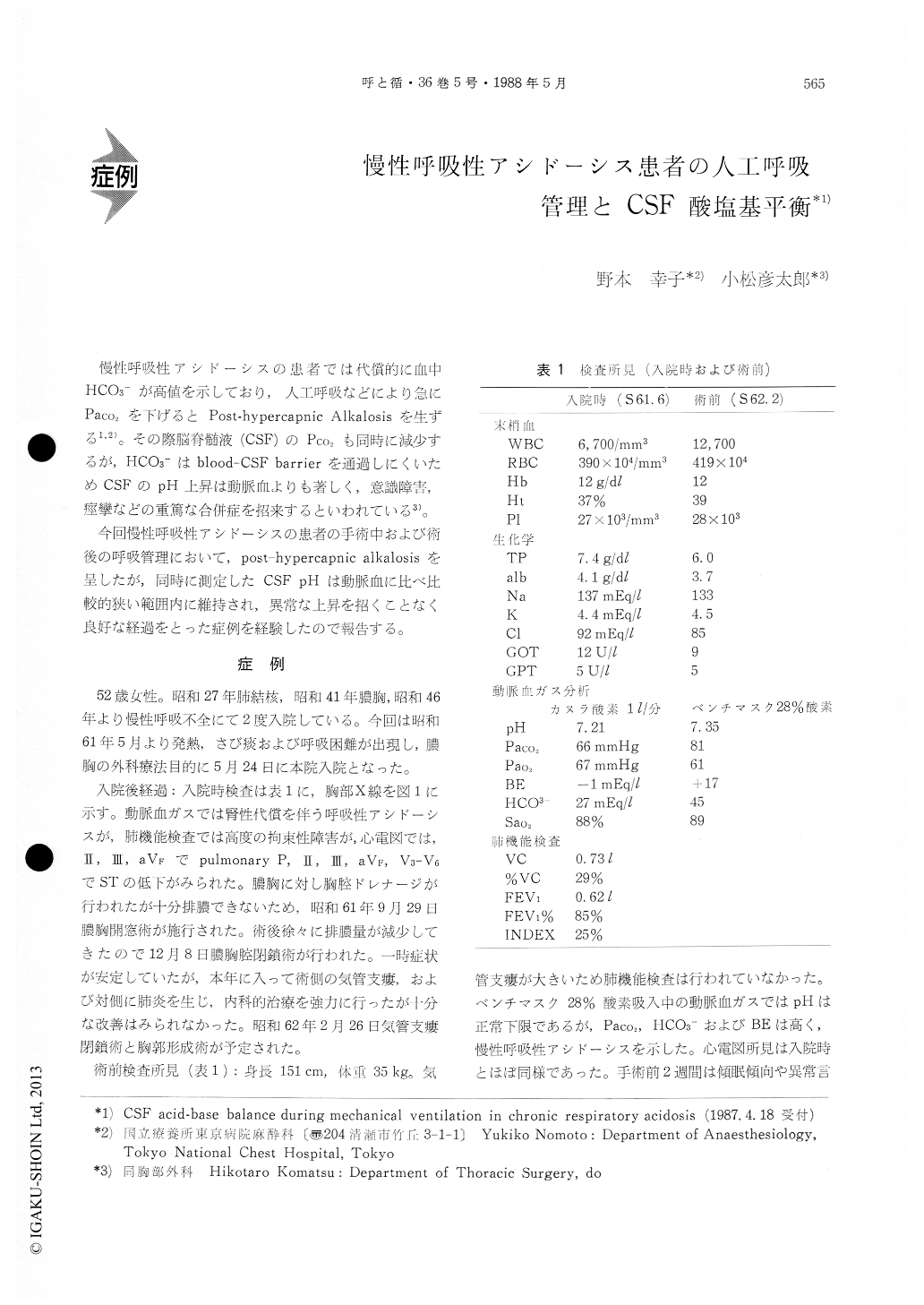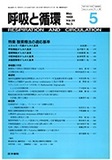Japanese
English
- 有料閲覧
- Abstract 文献概要
- 1ページ目 Look Inside
慢性呼吸性アシドーシスの患者では代償的に血中HCO3-が高値を示しており,人工呼吸などにより急にPaCO2を下げるとPost-hypercapnic Alkalosisを生ずる1,2)。その際脳脊髄液(CSF)のPCO2も同時に減少するが,HCO3-はblood-CSF barrierを通過しにくいためCSFのpH上昇は動脈血よりも著しく,意識障害,痙攣などの重篤な合併症を招来するといわれている3)。
今回慢性呼吸性アシドーシスの患者の手術中および術後の呼吸管理において,post-hypercapnic alkalosisを呈したが,同時に測定したCSF pHは動脈血に比べ比較的狭い範囲内に維持され,異常な上昇を招くことなく良好な経過をとった症例を経験したので報告する。
Comparison of rate and magnitude of changes in pH, CO2 tension, and lumbar spinal fluid was made in chronic respiratory acidosis case during mechani-cal ventilation.
Cerebrospinal fluid and blood samles were drawn before and at 1.5 hr, 24 hr and 48 hr after mechanical ventilation. Arterial blood pH increased from 7.36 to 7.49 in 1.5 hr, and decreased to 7.48 in 48 hr. Arterial PCO2 decreased from 75 to 56 mmHg in 1.5 hr, to 50 mmHg in 24 hr and to 48 mmHg in 48 hr. Arterial HCO3- increased 1 mEq/l in 1.5 hr, and decreased from 42 to 37 mEq/l in 24 hr, and to 36 mEq/l in 48 hr.
CSF pH increased from 7.23 to 7.32 in 1.5 hr. CSF Pco3- decreased from 88 to 62 mmHg in 1.5 hr, and to 53 mmHg in 48 hr. CSF HCO3- decreased from 36 to 31 mEq/l in 1.5 hr and 24 mEq/l in 48 hr.
CSF HCO3- was 5 mEq// lower than control at 1.5 hr after mechanical ventilation, whereas arterial blood HCO3- increased 1 mEq/l. Thus, CSF HCO3- decreased until the CSF pH is restored to near normal. The blood-CSF barrier appears to respond to the respiratory alkalosis by actively reducing CSF HCO3- : the data suggest that CSF pH is thus regulated by active transport by the blood-CSF barrier.

Copyright © 1988, Igaku-Shoin Ltd. All rights reserved.


